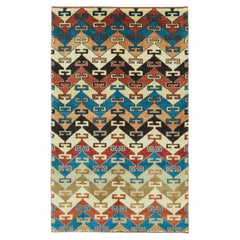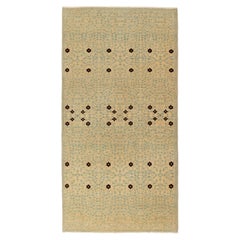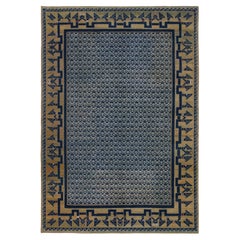Organic Material Turkish Rugs
21st Century and Contemporary Turkish Oushak Organic Material Turkish Rugs
Wool, Natural Fiber, Organic Material
21st Century and Contemporary Turkish Revival Organic Material Turkish Rugs
Wool, Natural Fiber, Organic Material
21st Century and Contemporary Turkish Oushak Organic Material Turkish Rugs
Wool, Natural Fiber, Organic Material
21st Century and Contemporary Turkish Revival Organic Material Turkish Rugs
Wool, Natural Fiber, Organic Material
21st Century and Contemporary Turkish Revival Organic Material Turkish Rugs
Wool, Natural Fiber, Organic Material
21st Century and Contemporary Turkish Revival Organic Material Turkish Rugs
Wool, Natural Fiber, Organic Material
21st Century and Contemporary Turkish Revival Organic Material Turkish Rugs
Wool, Natural Fiber, Organic Material
21st Century and Contemporary Turkish Revival Organic Material Turkish Rugs
Wool, Natural Fiber, Organic Material
21st Century and Contemporary Turkish Revival Organic Material Turkish Rugs
Wool, Natural Fiber, Organic Material
21st Century and Contemporary Turkish Revival Organic Material Turkish Rugs
Wool, Natural Fiber, Organic Material
21st Century and Contemporary Turkish Oushak Organic Material Turkish Rugs
Wool, Natural Fiber, Organic Material
21st Century and Contemporary Turkish Revival Organic Material Turkish Rugs
Wool, Natural Fiber, Organic Material
21st Century and Contemporary Turkish Revival Organic Material Turkish Rugs
Wool, Natural Fiber, Organic Material
21st Century and Contemporary Turkish Revival Organic Material Turkish Rugs
Wool, Natural Fiber, Organic Material
21st Century and Contemporary Turkish Revival Organic Material Turkish Rugs
Wool, Natural Fiber, Organic Material
21st Century and Contemporary Turkish Revival Organic Material Turkish Rugs
Wool, Natural Fiber, Organic Material
21st Century and Contemporary Turkish Revival Organic Material Turkish Rugs
Wool, Natural Fiber, Organic Material
21st Century and Contemporary Turkish Revival Organic Material Turkish Rugs
Wool, Natural Fiber, Organic Material
21st Century and Contemporary Turkish Revival Organic Material Turkish Rugs
Organic Material, Wool, Natural Fiber
21st Century and Contemporary Turkish Oushak Organic Material Turkish Rugs
Wool, Natural Fiber, Organic Material
21st Century and Contemporary Turkish Oushak Organic Material Turkish Rugs
Wool, Natural Fiber, Organic Material
21st Century and Contemporary Turkish Revival Organic Material Turkish Rugs
Wool, Natural Fiber, Organic Material
21st Century and Contemporary Turkish Revival Organic Material Turkish Rugs
Wool, Natural Fiber, Organic Material
21st Century and Contemporary Turkish Revival Organic Material Turkish Rugs
Wool, Natural Fiber, Organic Material
21st Century and Contemporary Turkish Revival Organic Material Turkish Rugs
Wool, Natural Fiber, Organic Material
21st Century and Contemporary Turkish Oushak Organic Material Turkish Rugs
Wool, Natural Fiber, Organic Material
21st Century and Contemporary Turkish Revival Organic Material Turkish Rugs
Wool, Natural Fiber, Organic Material
21st Century and Contemporary Turkish Revival Organic Material Turkish Rugs
Wool, Natural Fiber, Organic Material
21st Century and Contemporary Turkish Revival Organic Material Turkish Rugs
Wool, Natural Fiber, Organic Material
21st Century and Contemporary Turkish Oushak Organic Material Turkish Rugs
Wool, Natural Fiber, Organic Material
21st Century and Contemporary Turkish Revival Organic Material Turkish Rugs
Wool, Natural Fiber, Organic Material
21st Century and Contemporary Turkish Revival Organic Material Turkish Rugs
Wool, Natural Fiber, Organic Material
21st Century and Contemporary Turkish Revival Organic Material Turkish Rugs
Wool, Natural Fiber, Organic Material
21st Century and Contemporary Turkish Oushak Organic Material Turkish Rugs
Wool, Natural Fiber, Organic Material
21st Century and Contemporary Turkish Revival Organic Material Turkish Rugs
Wool, Natural Fiber, Organic Material
21st Century and Contemporary Turkish Revival Organic Material Turkish Rugs
Wool, Natural Fiber, Organic Material
21st Century and Contemporary Turkish Revival Organic Material Turkish Rugs
Wool, Natural Fiber, Organic Material
21st Century and Contemporary Turkish Oushak Organic Material Turkish Rugs
Wool, Natural Fiber, Organic Material
21st Century and Contemporary Turkish Revival Organic Material Turkish Rugs
Wool, Natural Fiber, Organic Material
21st Century and Contemporary Turkish Revival Organic Material Turkish Rugs
Wool, Natural Fiber, Organic Material
21st Century and Contemporary Turkish Revival Organic Material Turkish Rugs
Wool, Natural Fiber, Organic Material
21st Century and Contemporary Turkish Revival Organic Material Turkish Rugs
Wool, Natural Fiber, Organic Material
21st Century and Contemporary Turkish Oushak Organic Material Turkish Rugs
Wool, Natural Fiber, Organic Material
21st Century and Contemporary Turkish Revival Organic Material Turkish Rugs
Wool, Natural Fiber, Organic Material
21st Century and Contemporary Turkish Oushak Organic Material Turkish Rugs
Wool, Natural Fiber, Organic Material
21st Century and Contemporary Turkish Revival Organic Material Turkish Rugs
Wool, Natural Fiber, Organic Material
21st Century and Contemporary Turkish Revival Organic Material Turkish Rugs
Wool, Natural Fiber, Organic Material
1970s Azerbaijani Art Deco Vintage Organic Material Turkish Rugs
Wool, Cotton, Natural Fiber, Organic Material
1970s Turkish Victorian Vintage Organic Material Turkish Rugs
Wool, Cotton, Natural Fiber, Organic Material
1890s Turkish Kilim Antique Organic Material Turkish Rugs
Cotton, Organic Material, Wool
Mid-20th Century Turkish Bohemian Organic Material Turkish Rugs
Wool, Cotton, Organic Material
1970s Turkish Baroque Revival Vintage Organic Material Turkish Rugs
Wool, Cotton, Natural Fiber, Organic Material
1970s Late Victorian Vintage Organic Material Turkish Rugs
Wool, Cotton, Organic Material
1970s Turkish Victorian Vintage Organic Material Turkish Rugs
Wool, Cotton, Natural Fiber, Organic Material
1960s Azerbaijani Rustic Vintage Organic Material Turkish Rugs
Wool, Cotton, Natural Fiber, Organic Material
2010s Afghan Rustic Organic Material Turkish Rugs
Wool, Organic Material, Natural Fiber, Cotton
1890s Caucasian Rustic Antique Organic Material Turkish Rugs
Wool, Cotton, Natural Fiber, Organic Material
1980s Afghan Rustic Vintage Organic Material Turkish Rugs
Wool, Organic Material, Natural Fiber, Cotton




